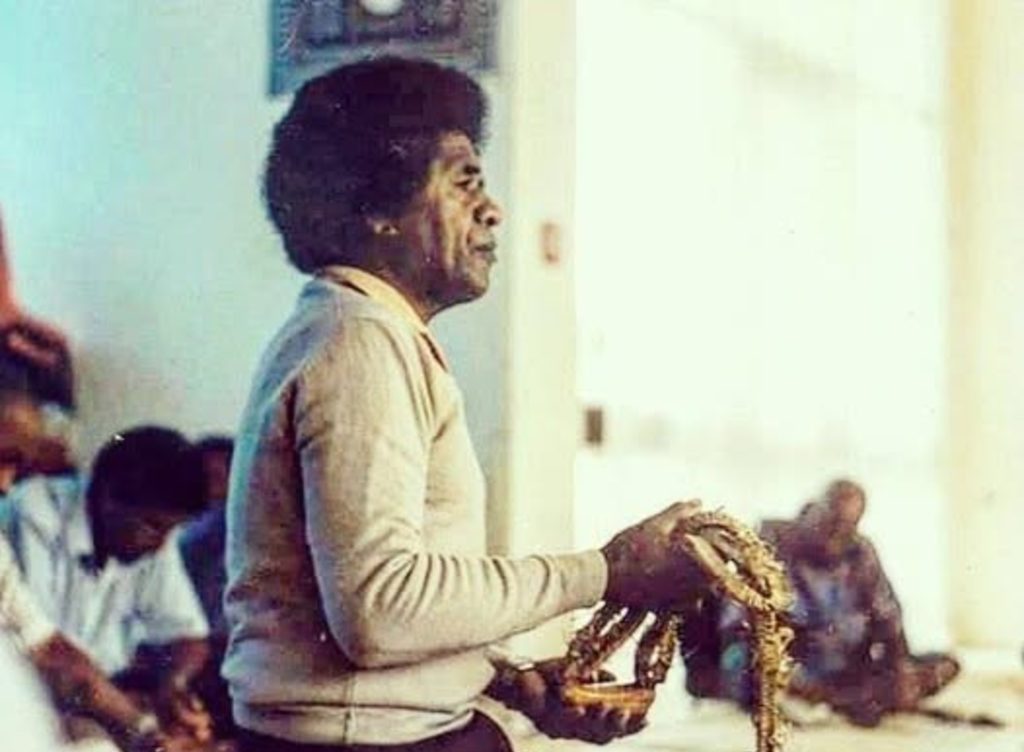Tradition and kinship remain the anchors of identity that define the island of Matuku, one of the islands of intrigue that belongs to the vibrant Yasayasa Moala in the far flung Lau archipelago.
At the heart of its chiefly structure stand two powerful titles that continue to influence the island’s leadership personified by the Turaga Na Tui Yaroi and the Turaga Na Ratu Na Taukei Wailiwaliwa.
Their relationship, forged through lineage and bound by custom, tells a story of migration, alliance, and enduring chiefly authority that stretches across centuries.
Yavusa Wailiwaliwa
Levukaidaku Village is the traditional seat of the Turaga Na Ratu who is also the head of the Yavusa Wailiwaliwa, from which his ancestry can be traced.
According to Mosese Coriakula, a member of the chiefly household and chair of the village development committee in Suva, this name has both historical and spiritual significance.
“Our yavusa (tribe) is named Wailiwaliwa,” he explained.
“It refers to our yavu (ancestral mound), where our vu, our ancestor and progenitor, established himself. He was also named Wailiwaliwa, and that is how the tribe took its name.”
Levukaidaku’s leadership extends beyond its borders, encompassing the villages of Lomati, Raviravi and Makadru.
Together, these four form the vanua o Baba Matuku, presided over by the Turaga Na Ratu, who is regarded as the overlord of this traditional confederation.
In Matuku’s unique chiefly arrangement, the island is divided into two domains, Baba Matuku, under the Turaga Na Ratu, and Yavusa Vakavanua, led by the Tui Yaroi, whose authority spans the villages of Yaroi, Natokalau and Qalikarua.
“The difference you’ll see,” Coriakula noted, “is that while other Lauan chiefs are known by the title ‘Tui’, our forefathers preserved the title Turaga Na Ratu. It is a name carried from our ancestral homeland, likely Waimaro in Naitasiri, before our people sailed to Matuku.”
The kingmaker of Matuku
The Turaga Na Ratu also holds a pivotal ceremonial role, that of kingmaker.
In the installation of the Tui Yaroi, it is he who performs the enthronement, conferring the title in a ritual that signifies not only respect but also the interdependence of both chiefly lines.
This balance of authority reflects a deeply entrenched partnership, the Turaga Na Ratu embodies the spiritual and ancestral stewardship of Matuku’s people, while the Tui Yaroi represents the island’s outward face of leadership, diplomacy, and unity within the island and its various yavusa.
Bloodlines across the seas
The oral histories of Matuku also weave through the migrations from Viti Levu’s highlands to the Lau Group.
In a detailed account, Osea Saunivalu Kaukimoce of Qalikarua Village, traced the Tui Yaroi lineage to the Taladrau tribe of West Colo in Viti Levu, whose chiefly household remains in Nadrau Village, Navosa.
From there, parts of the tribe journeyed through Serua and onward to Beqa Island, led by their chief, Ratu Nawadradra and his wife, Adi Vusonitokalu, also known as Raluve ni Burotukula, a descendant of the first settlers of the legendary vanishing island, Burotukula, near Matuku.
Their son, Ro Taginadranikaibeqa, would later return to his mother’s homeland, settling in Matuku and marrying into the chiefly family of Lakeba.
Their descendants established powerful connections across Lau, from Nasaqalau to Totoya and Gau, culminating in the rise of Roko Rakuita, who became the first Tui Yaroi.
The line of the Tui Yaroi
Roko Rakuita’s descendants continued to strengthen Matuku’s chiefly fabric.
He was succeeded by his son, Roko Yaroi, whose line became synonymous with the title Tui Yaroi Na Tui Matuku.
Over time, the name Tui Matuku came to be used interchangeably with Tui Yaroi, particularly during the era of Ma’afu’s influence in Lau.
The bloodlines of the Tui Yaroi and Turaga Na Ratu gradually became intertwined through marriages and alliances.
When Roko Tabuanitoga, a descendant of the Tui Yaroi, and his followers left Yaroi and settled with Saisai-i-Ratu of the Turaga Na Ratu family, the foundations of Qalikarua Village were laid, a living and physical embodiment of the unity between the two chiefly lines.
Blood of the vanua
Today, the descendants of these intertwined lineages, the mataqali Navaucanavanua and mataqali Nadurubua, carry within them the heritage of both the Tui Yaroi and the Turaga Na Ratu, as well as ancestral ties to the Vuanirewa of Lakeba and the first settlers of Burotukula.
“Our blood is a combination of the Taladrau of Colo, the Turaga Na Ramasi of Lakeba, the Vuanirewa, the Turaga na Tui Yaroi, and the first settlers of Burotukula,” Kaukimoce said
It is this convergence of genealogies spanning across mountains, islands and generations that continues to define Matuku’s chiefly identity.
The Tui Yaroi and the Turaga Na Ratu stand as two halves of one whole that is Matuku and are steadfast guardians of tradition and unity in a vanua whose history, like its people, flows from the fog-draped mountains of Viti Levu to pristine shores of Lau.
History being the subject it is, a group’s version of events may not be the same as that held by another group. When publishing one account, it is not our intention to cause division or to disrespect other oral traditions. Those with a different version can contact us so we can publish your account of history too — Editor.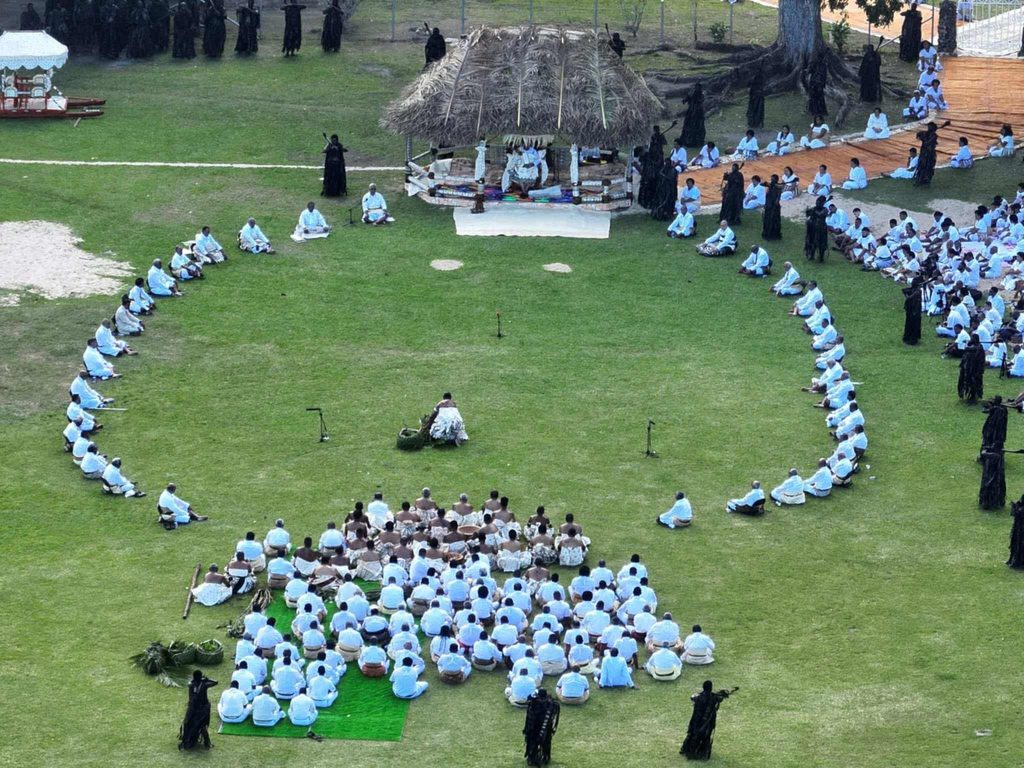
Right: During the installation of Ratu Tevita Uluilakeba Mara as Tui Nayau, Tui Lau and Sau ni Vanua ko Lau earlier this year, all chiefs taking part in the traditional yaqona ceremony known as the Yalofi, were required to wear all white together with a tawala (waist mat). The Turaga na Tui Matuku, Roko Lorima Niumataiwalu refused to abide, honouring the tradition of the Matuku people who are the only ones who defeated Ma’afu and were never subjected to Tongan rule.
Picture: SUPPLIED.
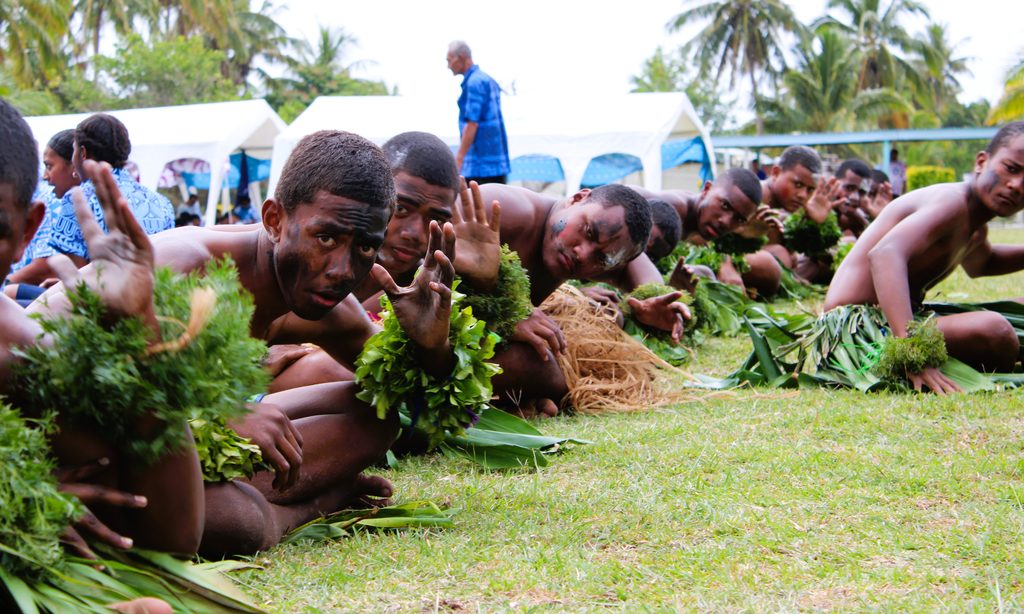
The young men of Matuku continue to display the spirit of ‘Matuku Dua’ till this day in traditional dances and
ceremonies. Picture: ALIFERETI SAKIASI
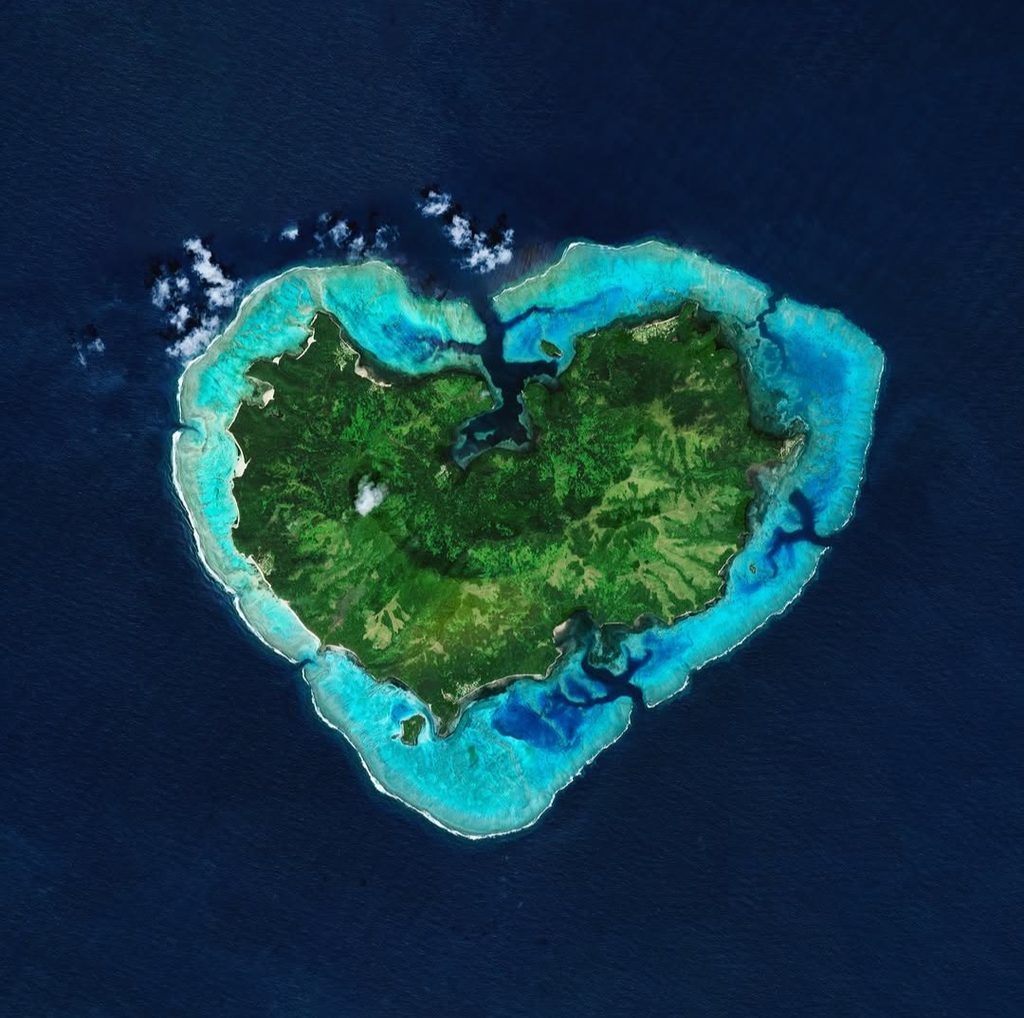
Matuku, the heart-shaped island, is known affectionately as the home of Burotukula.
Picture: DAILY OVERVIEW
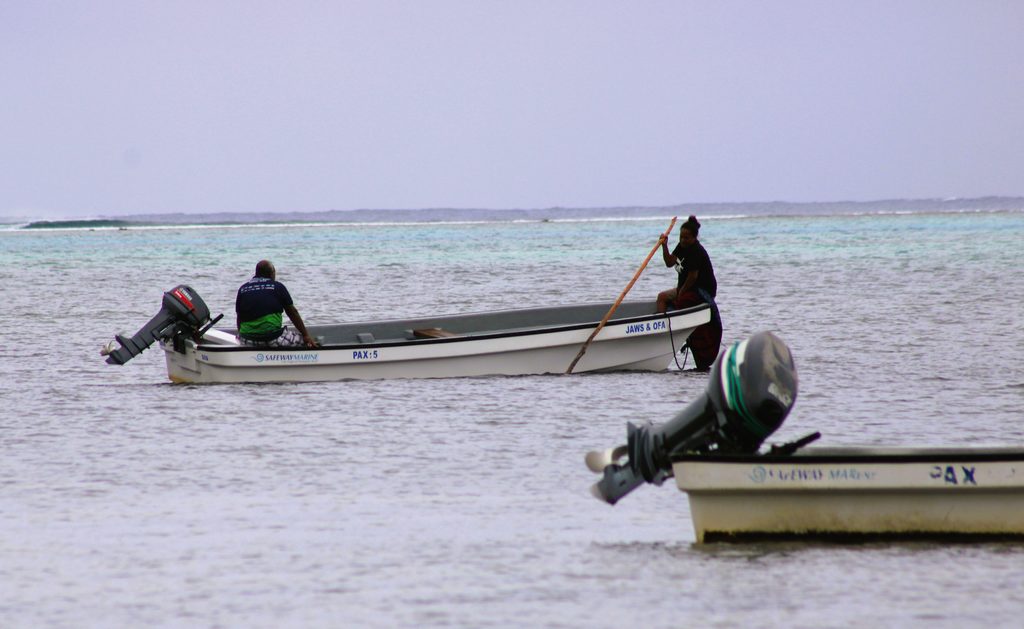
Villagers of Levukaidaku enjoy the cool tropical coastal breeze. Picture: ALIFERETI SAKIASI
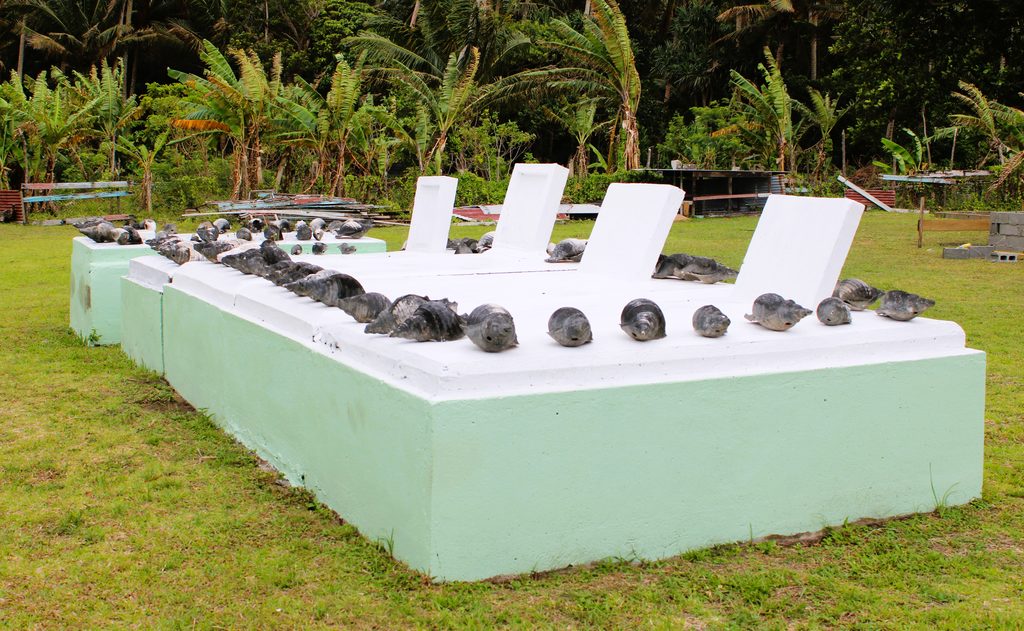
Tombstones of those who have served as Turaga Na Ratu Na Taukei Wailiwaliwa at the sacred burial space at Levukaidaku Village in Matuku. Picture: ALIFERETI SAKIASI
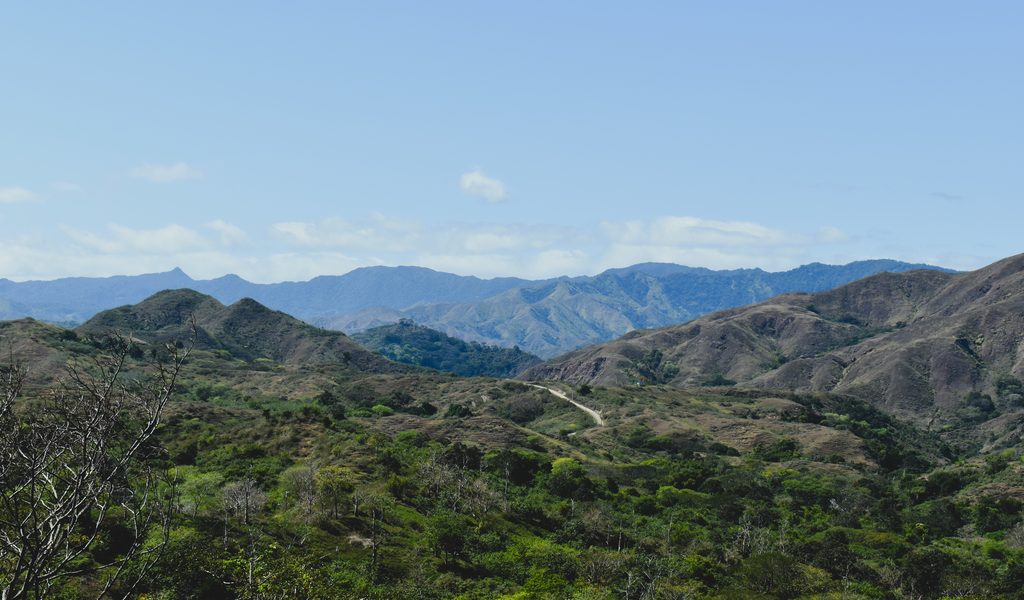
The rugged peaks of Navosa. Where it is believed the ancestors of the Mataqali Navaucanavanua passed through on their way down from Nadrau. Picture: ALIFERETI SAKIASI

